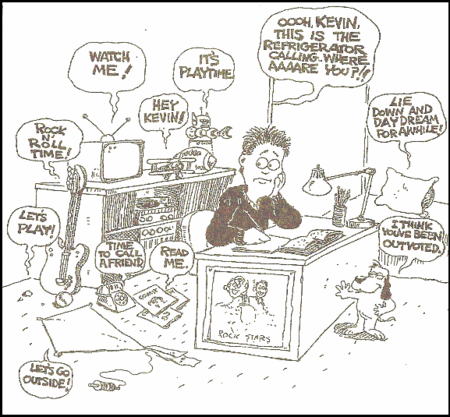
Resources for Online Learning
Need to brush up on some of your academic skills or understanding? Not thrilled with learning some of your classes' content from textbooks or other resources your teachers have provided? Want to continue learning about a subject once the class has moved on, or want to move ahead of the pace of the class? Check out some of these suggestions...
*Special thanks to the magazine
All You, and author Jessie Van Amburg, for some of these resources and ideas.
Multi-purpose sites and apps
Quizlet.com allows you to use pre-made flashcards, or to make your own, to review content ranging from science vocabulary to math facts. If you have this app on your phone or tablet, it's a productive thing to use while you're in traffic (as a passenger!), waiting in line, or just have a few minutes of downtime.
The
Hopscotch app allows you to practice coding your own games, art, and animation. Coding may not be taught at your school, but this app makes learning about and practicing it fun and easy.
StoryJumper.com allows you to create your own books by writing text and choosing from preloaded illustrations. If you choose, you can also get a hard copy version of the book printed and bound, and shipped to you for as little as $13. While StoryJumper is geared toward younger kids, there are other more mature options for older students. If you're into writing at all, starting your own blog on a free blogging platform like
blogspot.com or
EduBlogs.com can give you the opportunity to see your writing published online, and to have a real audience!
Audible.com has over 100,000 books and audio resources. If your eyes tire easily, or you're sick of listening to music in the car or while working out, an audio book is a fun (and sometimes free) thing to try. Podcasts (downloadable through the
iTunes store) are also a great audio resource, and you can find podcasts on all sorts of topics and in various genres.
FactMonster.com has interactive games (including math facts practice with varying degrees of difficulty) and supplemental materials that could be applied to the content in many of your classes.
Grammar
The
Mad Libs app (free)is a digital version of the old favorite. Play with your friends or alone, plugging in nouns, adjective, verbs, and other parts of speech to create a zany story and to learn some new vocabulary.
Chompchomp.com is a favorite resource among some middle school English teachers, for their interactive and weird games that allow students to practice grammatical concepts independently and at their own pace.
Foreign Language
Watch a foreign language film on Netflix, Amazon Instant Video, or Hulu. Choose to watch it with or without subtitles. Or, watch an English language film (maybe one you've seen before) that has been dubbed over in another language. Already knowing the plot of the film may allow you to focus more on listening to the vocabulary and pronunciation, because you don't have to be trying to figure out what's going on.
The
DuoLingo app and website allow you to make learning and practicing any of ten foreign languages, into a game! You can compete with friends, family, or classmates, or you can play as an individual. There are varying levels of difficulty you can work through too, so you'll be able to track your own progress and move at your own pace.
Science
YouTube has a bunch of channels that focus on science content. SciShow, MinutePhysics, and Khan Academy are some favorites. Khan Academy also has
its own full site, with videos, tutorials, and exercises related to science, math, and other content.
Budding astronomers may like the
SkyView app, which lets you chart the stars overhead simply by pointing your phone or tablet at the night sky.
iBirdLite is another free app that lets you explore your natural surroundings, specifically plants and animals.










